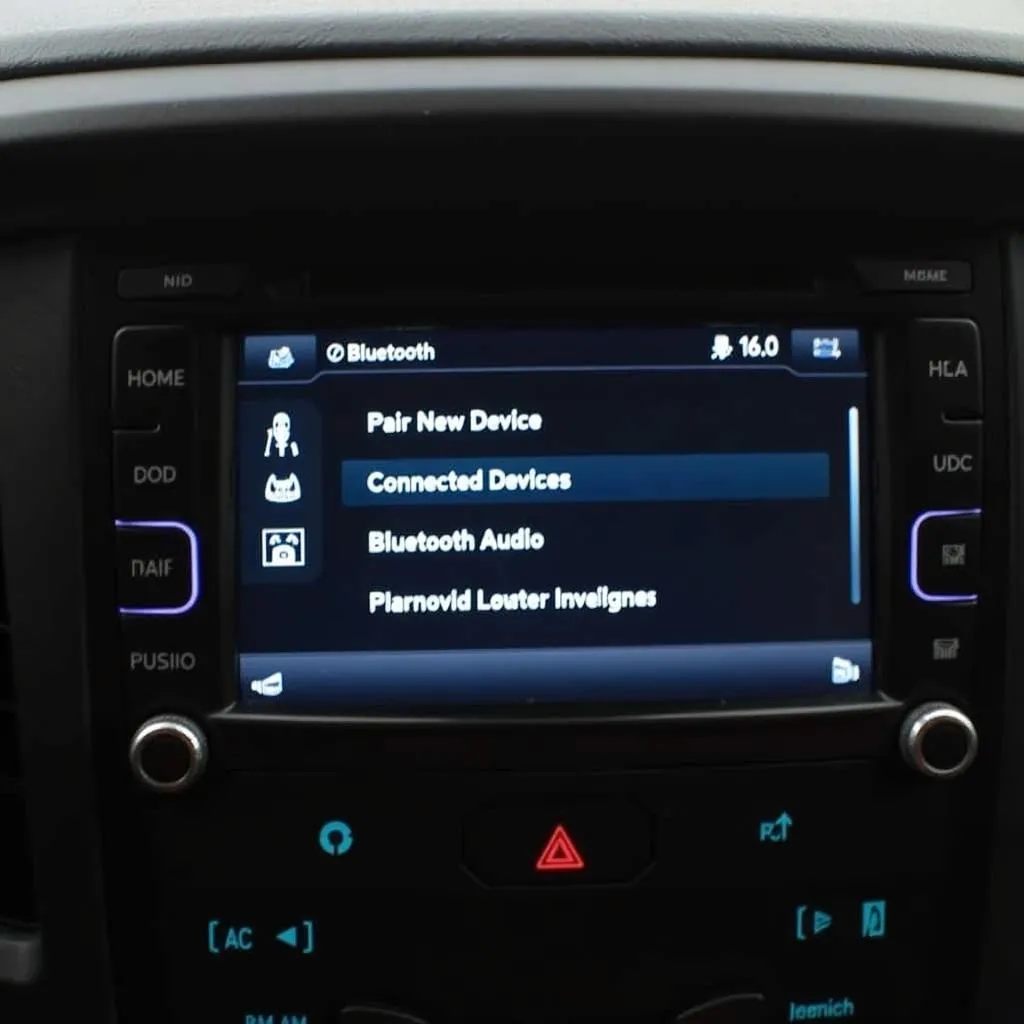You’re driving down the road, maybe a little distracted, when suddenly your car slams on the brakes. A warning flashes on your dashboard: “Autonomous Brake Intervention Warn for Ped Prot.” Before you even have time to process what happened, your car has potentially saved you from a collision. But what exactly does this message mean and what caused it to activate?
Deciphering the Warning: What Does “Autonomous Brake Intervention Warn for Ped Prot” Mean?
In simple terms, this warning means your car’s advanced safety system, specifically the Autonomous Emergency Braking (AEB), has detected a potential collision risk with a pedestrian and has either warned you or automatically applied the brakes to help prevent an accident. Let’s break down the key components of this message:
- Autonomous Brake Intervention: This indicates that your car’s system acted independently to engage the brakes.
- Warn: The system first issued a warning, giving you a chance to react.
- Ped Prot: This refers to “Pedestrian Protection,” signaling that the system identified a pedestrian in the vehicle’s path.
How Autonomous Emergency Braking with Pedestrian Detection Works
Cars equipped with this technology use a combination of sensors, such as cameras, radar, and lidar, to constantly scan the road ahead. These sensors work together to:
- Detect Obstacles: Identify pedestrians, other vehicles, and objects in the car’s path.
- Predict Potential Collisions: Analyze the speed and trajectory of your vehicle and potential obstacles to determine if a collision is likely.
- Warn the Driver: If a collision is imminent, the system will issue audible, visual, or haptic (vibration) warnings to alert the driver.
- Apply the Brakes: If the driver doesn’t react in time, the AEB system can autonomously apply the brakes, either partially or fully, to try and prevent or mitigate the severity of a collision.
Common Causes of False Warnings
While these systems are designed to be highly accurate, false warnings can sometimes occur. This is usually due to environmental factors that interfere with the sensors or situations where the system misinterprets the situation. Here are a few examples:
- Bright sunlight or glare reflecting off surfaces.
- Heavy rain, snow, or fog.
- Driving too close to the vehicle in front, especially if it brakes suddenly.
- Sharp curves or hills where the sensors have limited visibility.
What to Do When You See the Warning
- Stay Calm: It’s natural to be startled, but try to remain calm and assess the situation.
- Check Your Surroundings: Look for any pedestrians or obstacles that might have triggered the warning.
- Be Prepared to Brake: The system might not always apply full braking force, so be ready to brake yourself if needed.
When to Seek Professional Help
If you frequently experience false warnings, or if your AEB system has activated in situations where there didn’t appear to be a risk of collision, it’s essential to have your vehicle checked by a qualified technician. They can diagnose any potential issues with the sensors, software, or other components of the system.
Advanced Driver-Assistance Systems and Your Safety
The “Autonomous Brake Intervention Warn for Ped Prot” warning, while potentially alarming, highlights the increasing sophistication of advanced driver-assistance systems (ADAS) in vehicles. Features like AEB with pedestrian detection are designed to act as an extra layer of safety, helping to prevent accidents and protect both drivers and pedestrians.
Remember: While these systems can be incredibly helpful, it’s crucial to remember that they are not substitutes for attentive driving. Always remain vigilant, keep your eyes on the road, and be prepared to take control of your vehicle at all times.
FAQs
Q: Can I turn off the autonomous braking feature?
A: Most vehicles allow you to adjust the sensitivity of the system or turn off certain ADAS features, including AEB. However, it’s generally not recommended to completely disable these safety features unless absolutely necessary.
Q: What is the difference between AEB and Forward Collision Warning (FCW)?
A: FCW only warns the driver of a potential collision, while AEB can automatically apply the brakes if the driver doesn’t react. Many vehicles are equipped with both systems.
Q: Does my car insurance offer discounts for having AEB?
A: Some insurance companies offer discounts for vehicles equipped with advanced safety features like AEB, as they can reduce the likelihood and severity of accidents. Contact your insurance provider for more information.
Q: How can I ensure my car’s sensors are working correctly?
A: Regular cleaning of your car’s cameras and sensors can help ensure optimal performance. Avoid covering these sensors with stickers or accessories.
smart brake support15 with collision warning
Q: What should I do if my car’s AEB system seems to be malfunctioning?
A: Contact your dealership or a trusted mechanic specializing in ADAS to have the system inspected and repaired.
Remember, understanding how these systems work and knowing how to respond to warnings can help you stay safe on the road.

